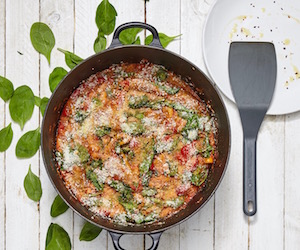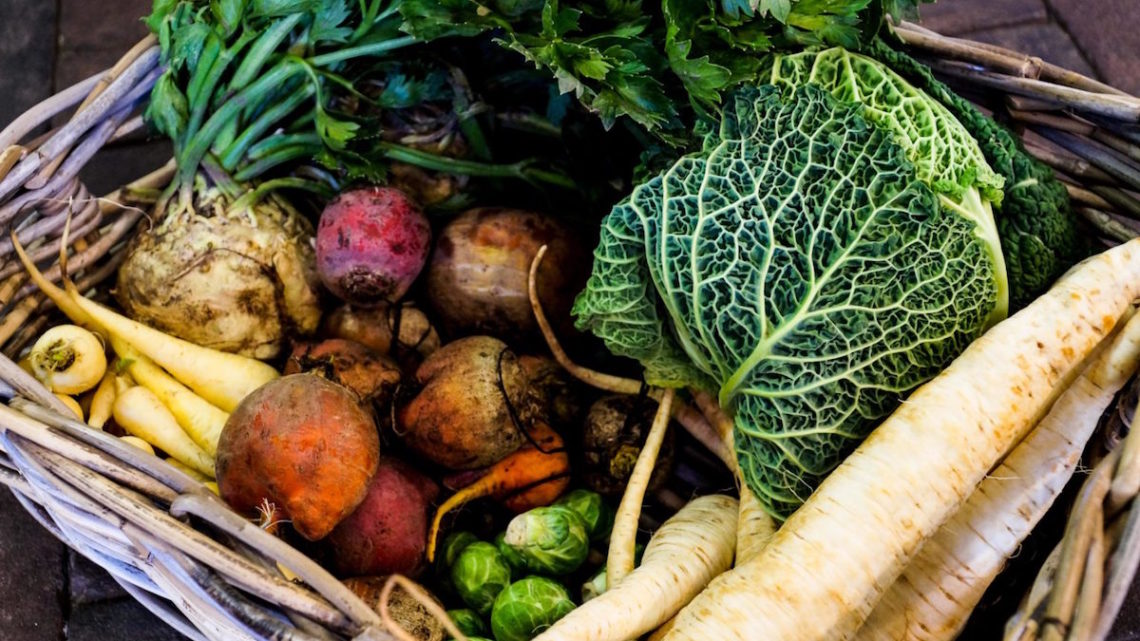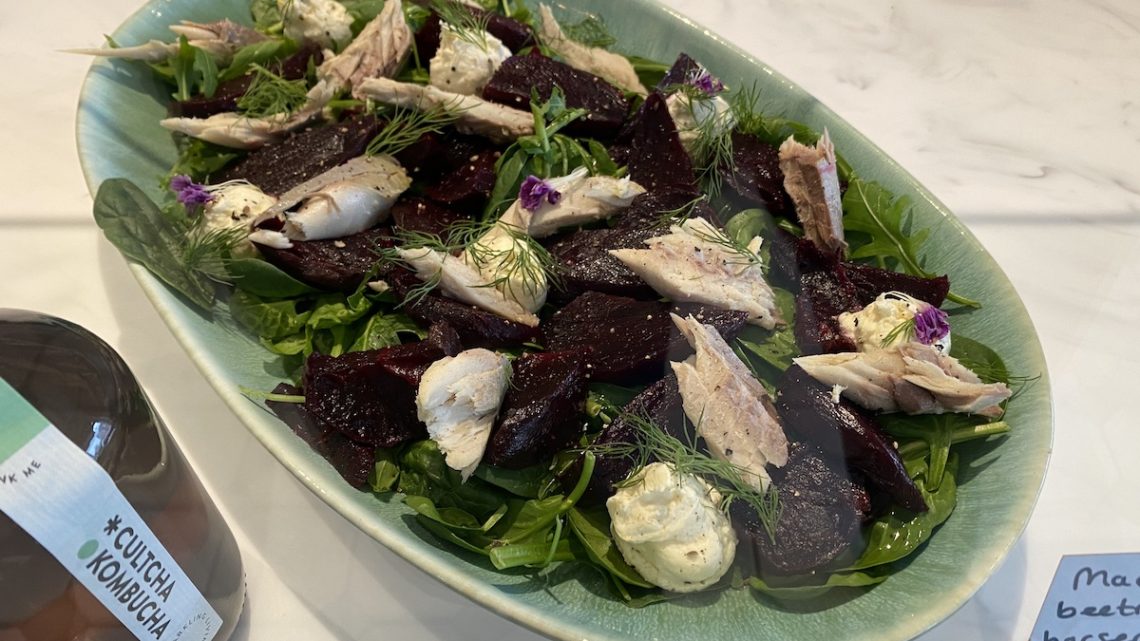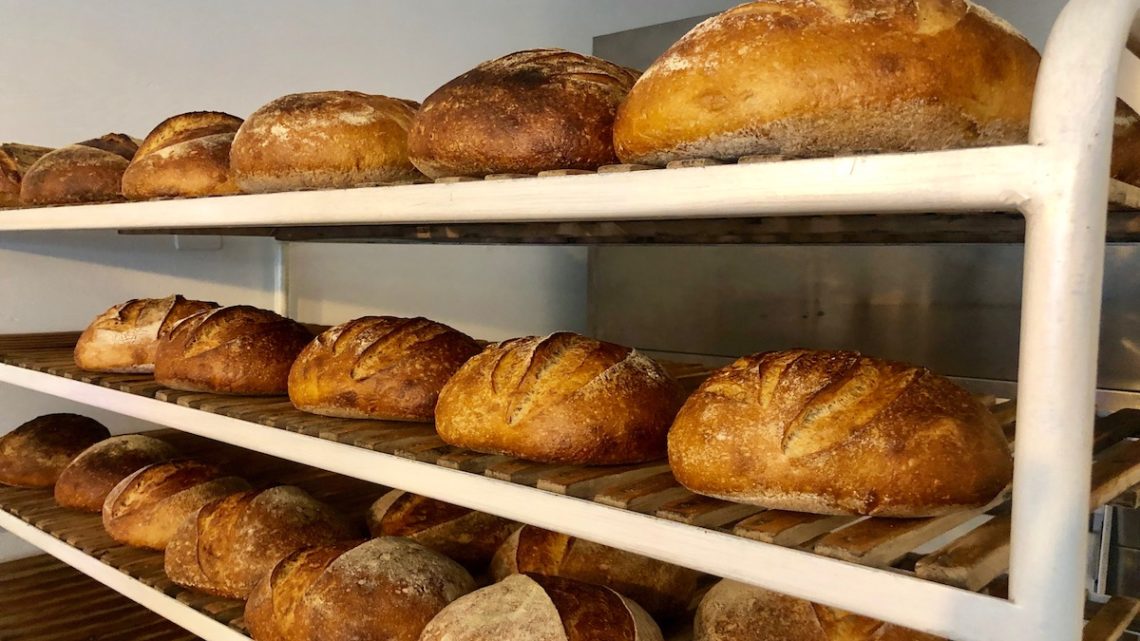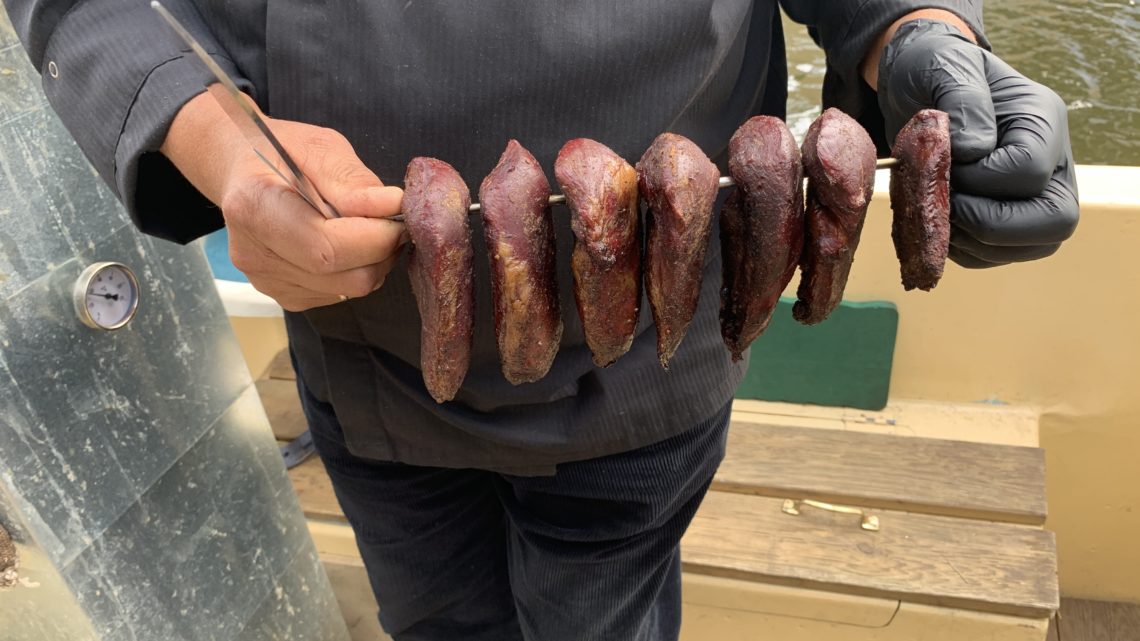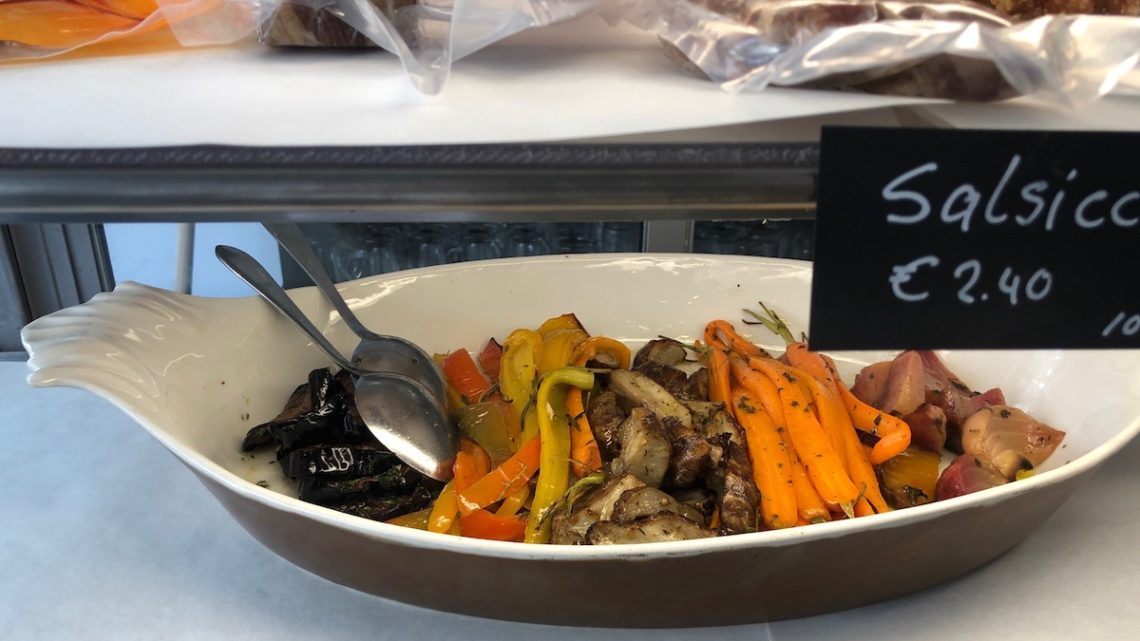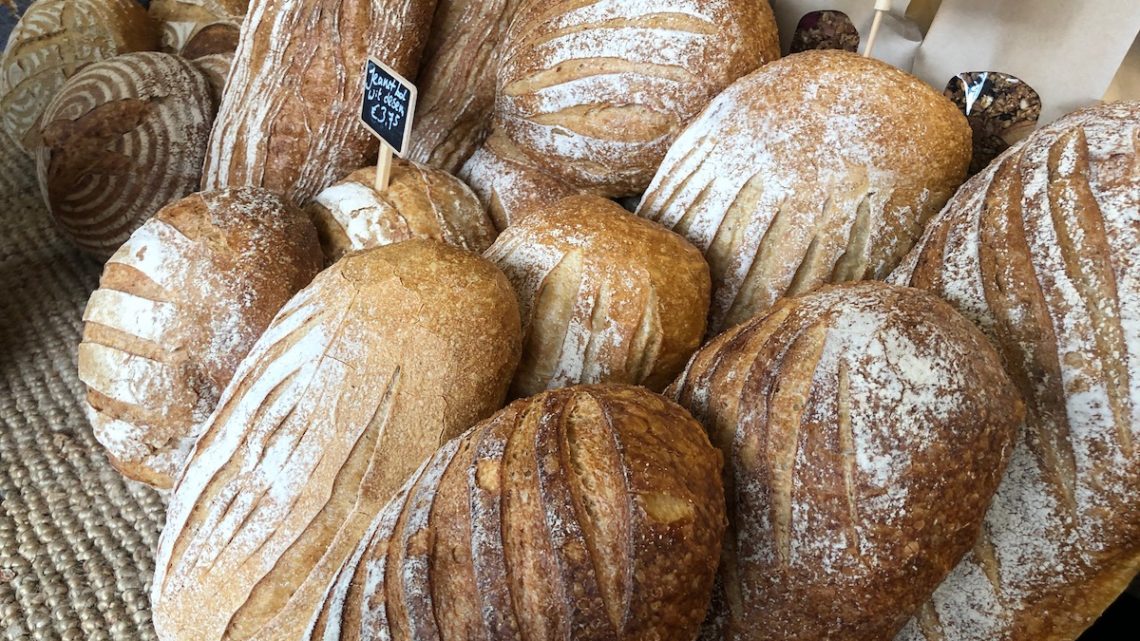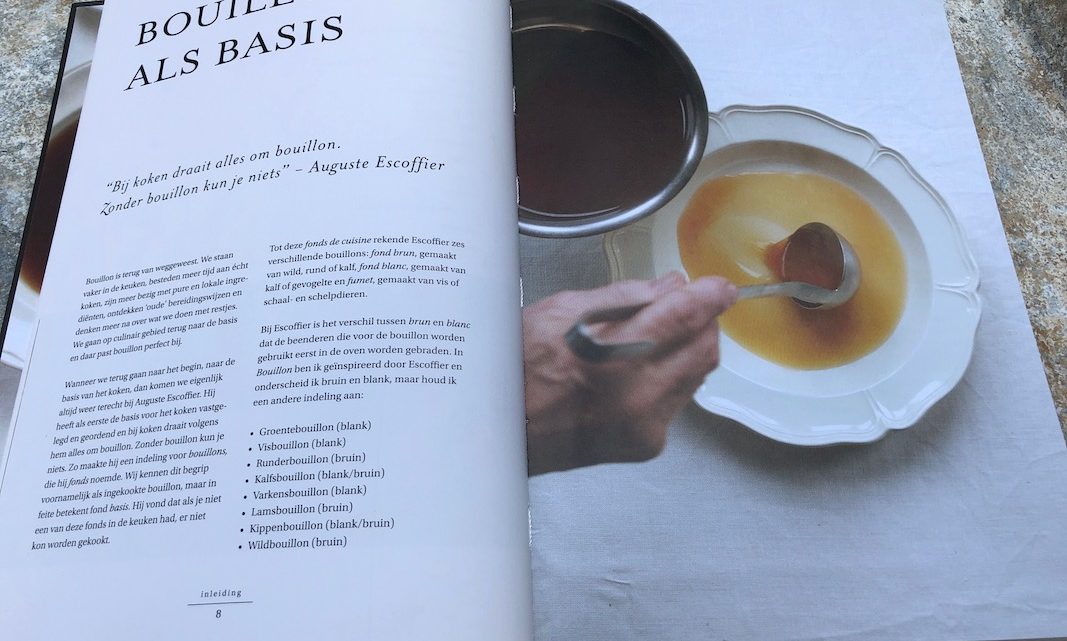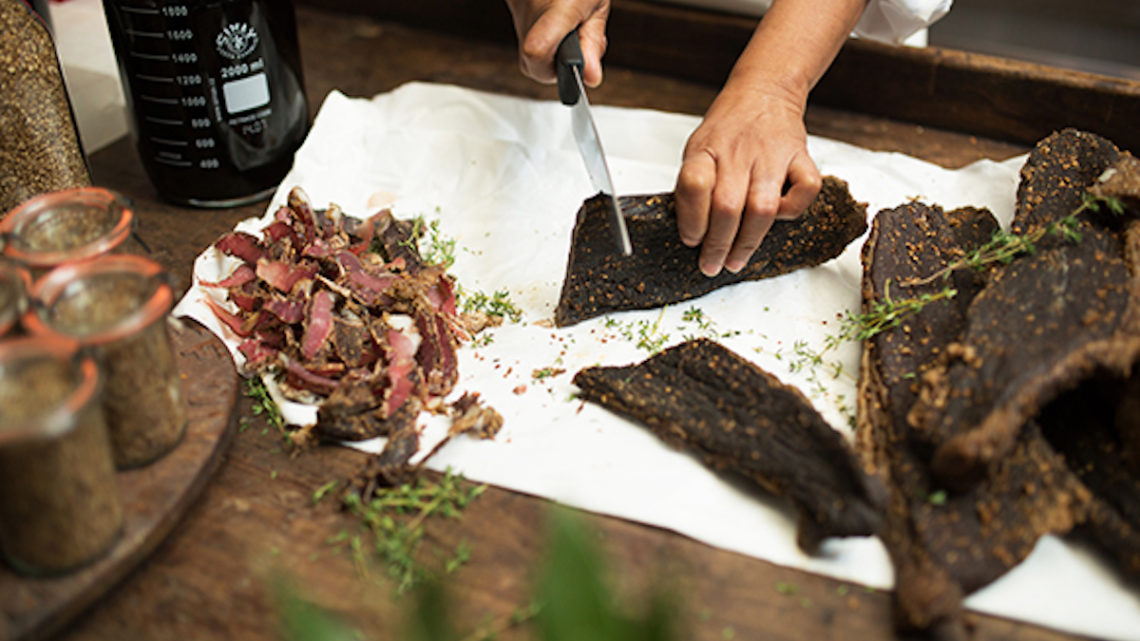Vegetable Boxes from Lindenhoff
Our friends at Lindenhoff have two fantastic boxes available at restaurant prices, both filled with seasonal products. The first called ‘Hollandse Glorie’ or Dutch Pride is filled with onions, potatoes, leeks, Belgian endive, carrots and garlic and retails now for €11,25. The other box is the ‘knollen bundel’ or root vegetable box filled with Jerusalem artichoke, parsnip, celeriac and salsify. It retails for €12,25. You can order the boxes through us and pick them up from our venue at the Westergas. The first person to order a box via us will get another box free as a gift. Email us at bernadette@amsterdamflavours.com to order. Please order before 18.00 so that the delivery can be ordered for the following day.
Sophie Eats
Sophie Eats is a new deli that has opened up in Amsterdam's Rivierenbuurt.
Sophie trained at Leith's in London and started catering from a shared kitchen in the city. She has quickly built up an name and good reputation for food that not only tastes good but looks beautiful too.
She recently realised her dream of opening her own deli where she serves her delicious cakes, salads and great coffee, alongside the fact that she now has her own kitchen from which to do all her catering.
Visit her beautiful deli. It's friendly, warm and inviting, just like Sophie is in person.
Levain et le vin
Levain et le vin is a new bread and wine store in the city. We say bread and wine, but it's actually much more than that. It's homemade sourdough breads and focaccia and the most amazing cinnamon buns!!
The wines sold or all natural wines, meaning that there are no additives and the process happens naturally.
They also have a cafe/coffee corner and where they serve great coffee and delicious sandwiches using their own homemade bread.
Visit Levain et le vin at Jan Pieter Heijestraat 168, Amsterdam
Friese Palingroker
Down the lengths and breadths of the Amsterdam Canals, cruises a man selling his wares. Bas Oosterbaan, aka de Friese Palingroker (Eel smoker from Friesland) is a colourful, passionate and genuine character who exudes warmth and excitement for what he does.
From his tiny boat, which is more equipped than you think, he sells his extraordinary home-smoked products. It naturally started with eel, which he is most famous for. It's delicate in flavour, not over seasoned or smoked.
Then there's cured and smoked gravadlax, hot smoked salmon, smoked goose breast, rilette (pulled goose) and confined goose leg.
Certainly a man of many talents. Look out for him on the Amsterdam Canals every Thursday, Friday and Saturday.
Toscanini
Toscanini is an institution in Amsterdam. For those of you who may not know it, it's one of the best Italian restaurants in the city.
Bernadette and chef/owner Leonardo Pacenti go back a number of years. At one stage, Bernadette made the desserts for the restaurant for a couple of years.
Leonardo has teamed up with Maud Moody and Nina Bogaerts to bring 'De Bijbel van de Italiaanse Keuken' or The Italian Kitchen Bible to life.
This comprehensive book covers every aspect of the Italian kitchen, the equipment you need, basic ingredients and the essential recipes that everyone who has an interest in Italian cuisine should know.
Go get yourself a copy while sipping on an espresso and getting some food to go from their new location, Magnani, just a few doors down from the main restaurant.
Mama Bakery
Mama Bakery produces organic artisan bread and pastries. A small team of dedicated bakers and patissiers work with love and passion.
We have an old colleague who manages their kitchen, so when we heard they have a stall at the Zuidermarkt every Saturday, we decided to go and see for ourselves. We didn't require much convincing because all their products are made using the best quality ingredients, such as flour from Dutch mills. All their goods are baked to perfection.
You can either go and visit them at their stall at the Zuidermarkt each Saturday, just as we did, or if you're willing to travel a little further, you can visit their bakery and store in Zwanenburg.
Cookbook Bouillon
We've known Jean Beddington, the author of 'Bouillon' for many years.
She was and is a pioneer chef. From the early days how she introduced Japanese flavours and techniques to Dutch pallets, she continued to push the boundaries in her famous restaurant, Beddington's.
Although not cooking in a restaurant kitchen these days, Jean still remains as active as ever. Her latest cookbook is called 'Bouillon'. Stocks, as they are taught in chef's school, are the fundamental building blocks in cooking. This book gives readers the know how to getting the best stock you possibly can. Taking you through the sourcing of the ingredients to the cooking techniques and timing to achieve perfection.
The book then follows with an array of tempting and delicious recipes all featuring stock as there base.
The book is currently only available in Dutch, but we hope that an English version will follow soon.
Biltong
Biltong is a form of dried, cured meat that originated in Southern African countries (South Africa, Zimbabwe and Zambia). Various types of meat are used to produce it, ranging from beef and game meats to fillets of meat cut into strips following the grain of the muscle, or flat pieces sliced across the grain. It is related to beef jerky in that they are both spiced, dried meats; however, the typical ingredients, taste and production processes may differ.
The word biltong is from the Dutch bil ("buttock”") and tong ("strip" or "tongue").
Meat preservation as a survival technique dates back to ancient times. Indigenous peoples of Southern Africa, such as the Khoikhoi, preserved meat by slicing it into strips, curing it with salt, and hanging it up to dry. European seafarers preserved meat for their long journeys by curing meat in salt or brine. European settlers (Dutch, German, French) who arrived in southern Africa in the early 17th century used vinegar in the curing process, as well as saltpetre (potassium nitrate). The potassium nitrate in saltpeter kills Clostridium botulinum, the deadly bacterium that causes botulism while the acidity of the vinegar inhibits its growth. According to the World Health Organization, C. botulinum will not grow in acidic conditions (pH less than 4.6), therefore the toxin will not be formed in acidic foods. The antimicrobial properties of certain spices have also been drawn upon since ancient times. The spices introduced to biltong by the Dutch include pepper, coriander, and cloves.
The need for food preservation in South Africa was pressing. Building up herds of livestock took a long time, but with game in abundance in South Africa, traditional methods were called upon to preserve the meat of large African animals such as the eland in a warm climate. Iceboxes and refrigerators had not been invented yet. Biltong as it is today evolved from the dried meat carried by the wagon-travelling Voortrekkers, who needed stocks of durable food as they migrated from the Cape Colony north and north-eastward (away from British rule) into the interior of Southern Africa during the Great Trek. The meat was preserved and hung to be dried for a fortnight during the colder winter, with the cold temperatures aiding to further inhibit bacterial and fungal growth. Once suitably dried, the biltong was ready for packing in cloth bags, which allow air circulation to prevent mould.
While biltong is usually eaten as a snack, it can also be diced up into stews, or added to muffins or pot bread. Biltong-flavoured potato crisps have also been produced, and there are cheese spreads with biltong flavour. Finely shredded biltong is eaten on slices of bread and in sandwiches.
Biltong can be used as a teething aid for babies.
Biltong is a high-protein food.
Marshmallow with raspberries
Ingredients
2 egg whites
12 leaves gelatine
pinch of salt
500 g castor sugar
350 ml water
1 tablespoon flavourings rose water
1 punnet fresh raspberries
Method
Put the sugar and water in a pan and boil until they reach 127 C. Begin to beat the egg whites in an electric mixer when the sugar is at 121C. Soften the gelatine leaves is water and then dissolve the gelatine in the hot syrup.
Pour the syrup slowly on to the whisked egg whites and add the rosewater. Let it whisk until cold and working quickly, pour half the marshmallow mixture into a tin or container dusted with a mixture of equal quantities of cornstarch and icing sugar. Lay the raspberries on top and cover with the remaining marshmallow mixture. Let it cool completely and then cut into cubes. Dust with the cornstarch/sugar mixture and serve. Store, refrigerated, in an airtight container.
Bilder & de Clercq's New Recipes week 35 - 2017
As the chefs of Bilder & de Clercq, we develop new recipes for them every week. We'll keep you updated with the week's newest recipes. This weeks recipes are:

